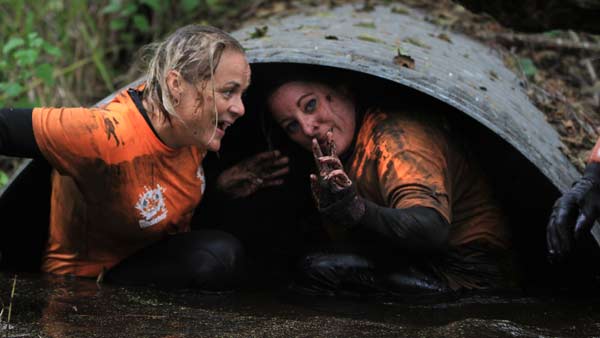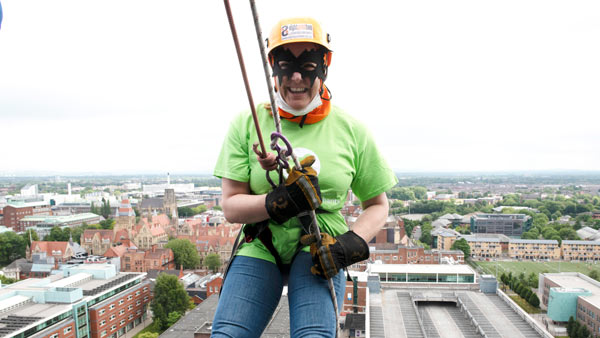Contact Us
Walking Events
Cycling Events
Abseiling Events
Obstacle Course Events
Get In Touch With Us
FAQs
Frequently Asked Questions
Obstacle Course races, mud runs and colour run event FAQ's
Who can take part?
We can put on charity obstacle races, mud runs and colour runs for anyone 8 yrs and over (8yrs to 11yrs need to be accompanied by an adult over 16yrs of age) and no maximum ages. We have even had someone in their 80’s participate! The events are open to all levels of fitness and you can run or walk around each obstacle course that we organise. Needless to say, the events will feel much easier if you have done some training before hand and you should always get checked out by your GP to make sure that you are ‘fit enough’.
What type of obstacles do we have?
Is there timing?
Where is it held?
What facilities will there be?
Is there parking available?
Can spectators come?
What should I wear?
Any other information I should know?
Any further questions?
If you have any further questions please do not hesitate to contact us – there are no silly questions!
We’ve run many such events and fully understand if you’ve not entered or watched a similar event before you want to know what it’s like. We also suggest watching a video of the Whole hog race (www.wholehograces.co.uk) in action in 2021 or looking at our photo galleries, to get a feel for the wide range of entrants and obstacles.
Charity abseils FAQ's
Can people with disabilities take part in abseiling events?
Abseil Events UK (AEUK)/Eight Point Two (8.2) is very keen to provide the opportunity for anyone with a disability with the opportunity to take part in its events. Charities should speak with 8.2 about specific disabilities and discuss the opportunity for a person’s involvement.
Please note that the provision of abseiling for people with disabilities can be a very specialist area, requiring additional technical equipment and knowledge as well as taking a great deal more time and instructors.
In addition, many of the unique venues that we use also aren’t suitable to deliver this specialist area.
AEUK/8.2 generally provide events for people without disabilities. It may be necessary for the charity to book two or more time slots to facilitate a person’s involvement with a specific disability
What is the minimum age for participants on abseils?
What is the maximum age for abseiling participants?
Abseiling activities are mentally & physically challenging, but we will not stop any older person from having a go if they believe themselves to be fit enough. If there is any doubt, advise that the participant should ask their doctor.
What is the maximum weight for abseiling participants?
17 stone (108kg) for abseils. Larger people need to be fitted with a chest harness in addition to the waist harness. At some sites, participants may need to climb over a fence or rail to get to the abseil; therefore they must have ease of movement in order to do this.
What is the minimum weight for abseiling participants?
6 stone (38kg) for abseils. AEUK/8.2 reserve the right to prevent someone from doing an event if they are too small, and the weather is inclement, i.e. windy. Small people can get blown around more. This is not a frequent occurrence.
Is the equipment safe?
All of our equipment, especially ropes, are stored, maintained and replaced, as for the standard practice recommend by the manufacturers. All equipment is checked frequently and retired if there is any damage to any part. The equipment we use has an unspecified working life, and in his role as a technical advisor, Ian Loombe is qualified to make any inspections needed
Does 8.2 use qualified instructors?
8.2 only employ qualified staff when used in instructor roles, and we are governed by the MLTE (Mountain Leader Training Board- England) and the BMC (British Mountaineering Council). Ian Loombe is a member of AMI (Association of Mountaineering Instructors). Please look at www.mltb.org and www.aala.org.uk for more information. All of our instructors are First Aid qualified; they must be, in order to maintain their instructor qualifications.
What happens if someone gets stuck or falls?
If someone gets stuck half way down, the abseil rope will be loosened; they will be released, and then lowered on the safety rope. The abseil ropes are always fastened in a way that makes them very quick to release. No one will fall from the top, as they will be ‘tied-on’ as soon as they reach the abseil station. Instructors will remain tied-on at all times
Is AEUK/8.2 insured?
Yes.
Any event run by us has Civil Liability cover of up to £5 million. Once the participants are handed over to 8.2 instructors, they are covered by our insurance.
Charity walking events FAQ's
What kit is essential for me to bring?
PLEASE NOTE: We will NOT let you take part if you are missing essential kit when you arrive on the day.
- Footwear – a fairly flexible pair of walking boots with good lateral stiffness and well kept strong soles, adequate for hill walking. They should have a high ankle support and should not be smooth-soled. Trainers are not acceptable. To avoid blisters it’s best to wear a good quality pair of walking socks and make sure your boots are broken in. If you don’t have a pair of walking socks, then wearing two pairs of socks (one thick, one thin) will be better than one pair of non-walking socks. If you are prone to blisters please pre-plaster the points which suffer most.
- Clothing – Layer up! We advise a base layer (dryflo wicking top), a mid-layer (microfleece), and a good quality outer layer (fleece). Stretchy tracksuit trousers are perfectly adequate, as are shorts and walking trousers (not jeans!). If you are prone to feeling the cold thermal leggings may also be useful. Please also bring additional layers of clothing suitable for both warm and cold weather conditions.
- Waterproofs – Fully waterproof jacket and over-trousers. Good quality (e.g. gore-tex) is essential.
- Rucksack – 25-30 litre capacity (large enough to carry spare clothing, food, water bottle, camera).
- Warm weather kit – sunglasses, sun cream and sun hat.
- Cold weather kit – woolly hat, gloves and scarf.
- Food and drink – Water (2 litres), flask and packed lunch – it is important that you carry water to ensure you don’t become dehydrated. Also carry enough food/snacks to keep you going for the duration of the walk.
- Mobile phone – everyone must take a charged mobile phone with them on the walk, in a waterproof bag. If you do not have a mobile phone, make sure you walk and stay with a fellow walker who has a phone. These numbers must be provided to the Events Team before departure.
What other kit would you suggest I bring?
- Walking or ski poles – these are recommended for support, especially in descent, for tired legs and for boosting you uphill.
- High calorie snacks – chocolate and nuts are good sources of energy.
- Equipment – compass/torch and spare batteries.
- Survival bag and whistle – person-sized plastic survival bag available in outdoor shops.
- Personal first aid kit – including rehydration tablets, plasters, blister plasters, sterile gauze dressings, crepe rolled bandages, safety pins, tweezers, scissors, alcohol-free cleansing wipes, painkillers such as paracetamol, aspirin or ibuprofen (as appropriate to yourself), sticky tape, cream to relieve insect bites and stings
- Map – Ordnance Survey map of the area.
What time do I register on the day?
Will I still be able to take part if I am late arriving at registration?
How long does it take to complete the walk?
Please remember that we do not operate our event as a time trial or race. We ask that participants treat this walk accordingly and do not push themselves past their capabilities in order to achieve a ‘good’ time. Completing this walk at all is an achievement in itself!
Will I need to walk in a group?
Do I really need to train for this event?
These are physically demanding event, climbing mountains is no easy task so any training you have done before the event will certainly help. This requires a certain level of fitness and stamina best acquired through training.



